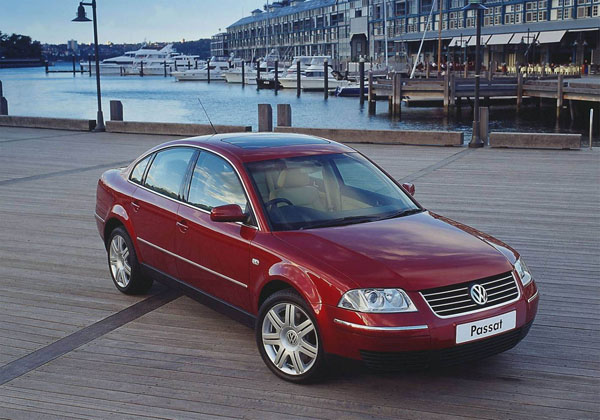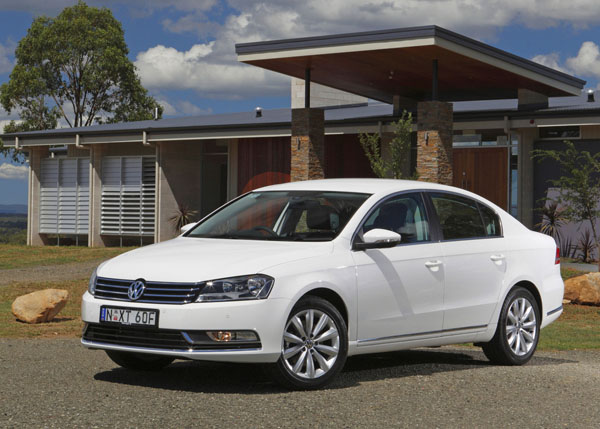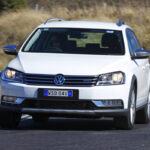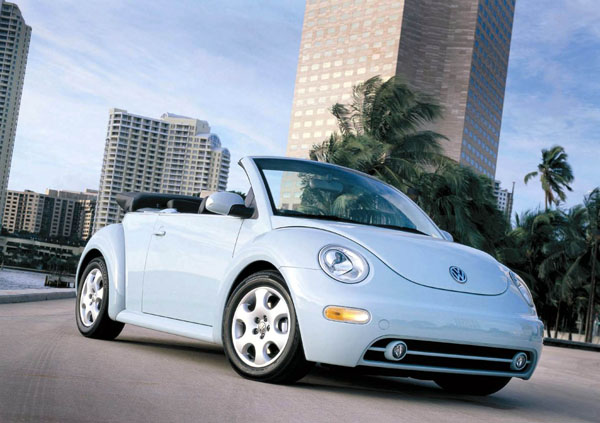Volkswagen Passat is a medium-large car aimed at those looking for a solid machine that should stand the test of time. Stylish it’s not, but that’s the way VW does its shapes, intending them to be timeless. There’s an exception in the Passat range, see the upcoming notes on the model tagged the ‘CC”.
Passat shares quite a few out of sight components with upmarket Audis as that prestige marque is controlled by the Volkswagen Group these days.
In the earlier days almost all Passat imports were four-door sedans but five-door wagons were offered from 1998 and have been a popular choice because their squared off rear end makes for a practical load area.
An interesting new style called Passat CC was introduced in February 2009. Virtually a four-door coupe the sleek Passat CC targets those who seldom use the back seat for adults, but who do want the convenience of rear doors. The back seat is reasonably comfortable and is certainly much better than that of the typical two-door coupe.
When the latest CC was introduced in June 2012, the marketing guys removed ‘Passat’ from its name and it’s now simply the ‘CC’. Don’t forget to check out both names if you’re doing an online search.
The Passat works well for those looking for comfort, it has well-shaped seats and suspension which is able to soak up just about anything, even rough and ready Aussie backroads.
Handling is good, with neutral road behaviour at normal speeds, gradually changing to safe understeer if the big car is pushed hard.
Engine options show a fascinating variation, with four-, five-, six- and eight-cylinder layouts. The V5 and V6 use an interesting design with a narrow-angle V which enables it to run one cylinder head covering both cylinder banks.
Though smaller engines aren’t always accepted by Australian buyers, even the four-cylinder Passats have enough performance for many buyers. Many of the later petrol – and all diesel – Volkswagen engines use a turbocharger to generate significantly extra torque.
Volkswagen started a strong push on turbo-diesel engines in Australia in 2006 and these days the company often sells more diesels than petrols downunder.
A four-speed automatic was used in the pre-1998 model, followed by a five-speed unit with tiptronic manual overrides. The forward ratios were increased to six with a DSG installation from 2006, and to seven forward ratios from early 2010.
All-wheel drive isn’t all that common in Australian Passats but gives better traction coming out of corners and on slippery surfaces and is worth considering if you are doing a lot of driving on unmade surfaces, or even on the snow and ice for which it was originally designed.
For the revhead, Volkswagen imported the Passat R36 from June 2008. R36 has a 300 horsepower engine, all-wheel drive and is sold in both sedan and wagon bodies. We find the wagon a particularly potent machine.
Insurance is generally not expensive but make inquiries from a number of companies as there can be quite a difference in premiums.
The Volkswagen dealer group has grown markedly in Australia in recent years and the company is now represented in most population centres of significant size.
Spare parts costs are about average for a moderately upmarket car in this class and we haven’t heard of many real complaints about availability.
Passat is a relatively complex machine in the modern manner, but a competent home mechanic should be able to do a fair bit of work on it. Always have a workshop manual on standby – and leave safety related items to professionals.
WHAT TO LOOK FOR
Look over the condition of the interior in case the Passat has had a hard life. It’s not common in a car like this, but can happen and rectification can be expensive.
The engine should start within a second of the key being turned and should settle into a steady idle within seconds.
If there is a flat spot in acceleration there could be fuel-injection problems, especially in older cars. These can be expensive to repair.
Check the insides of the front wheels for signs of brake dust buildup, probably indicating hard driving. This is more likely on one of the sporting models, but Passats do seem to attract people who like to push their cars hard.
Look over the body for signs of crash repairs, especially paint that doesn’t match and panels that don’t fit exactly. Check the complete body, including hard to reach areas under the bonnet, in the boot and under the car.
CAR BUYING TIP
‘Big cars for a big country’. It may sound corny these days, but it really does apply if you’re doing a lot of work on country roads, particularly those that have seen better days.













